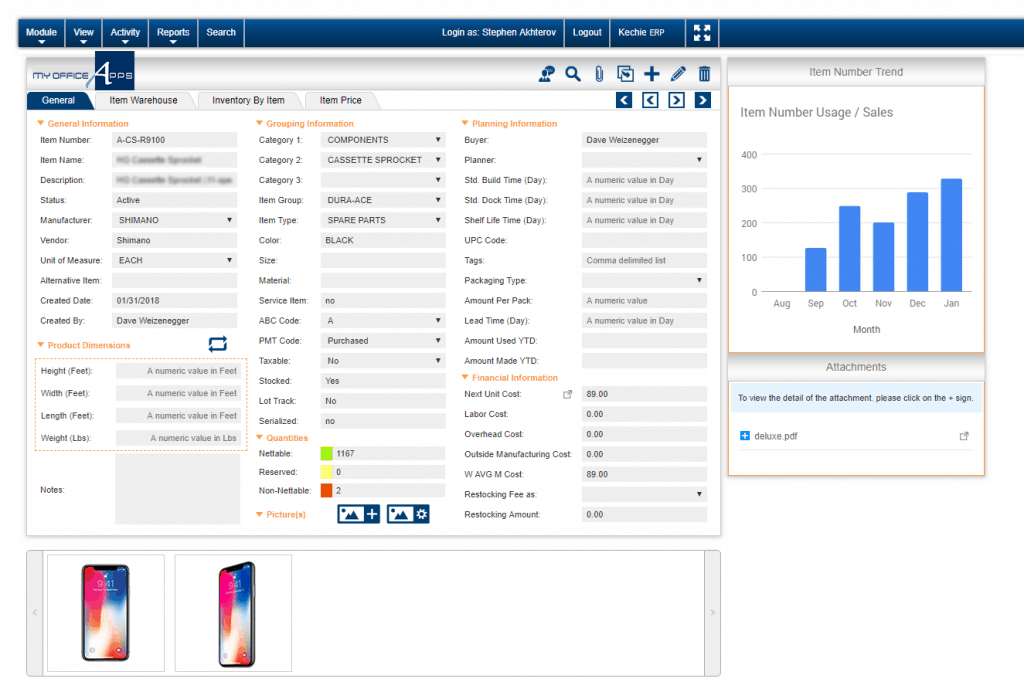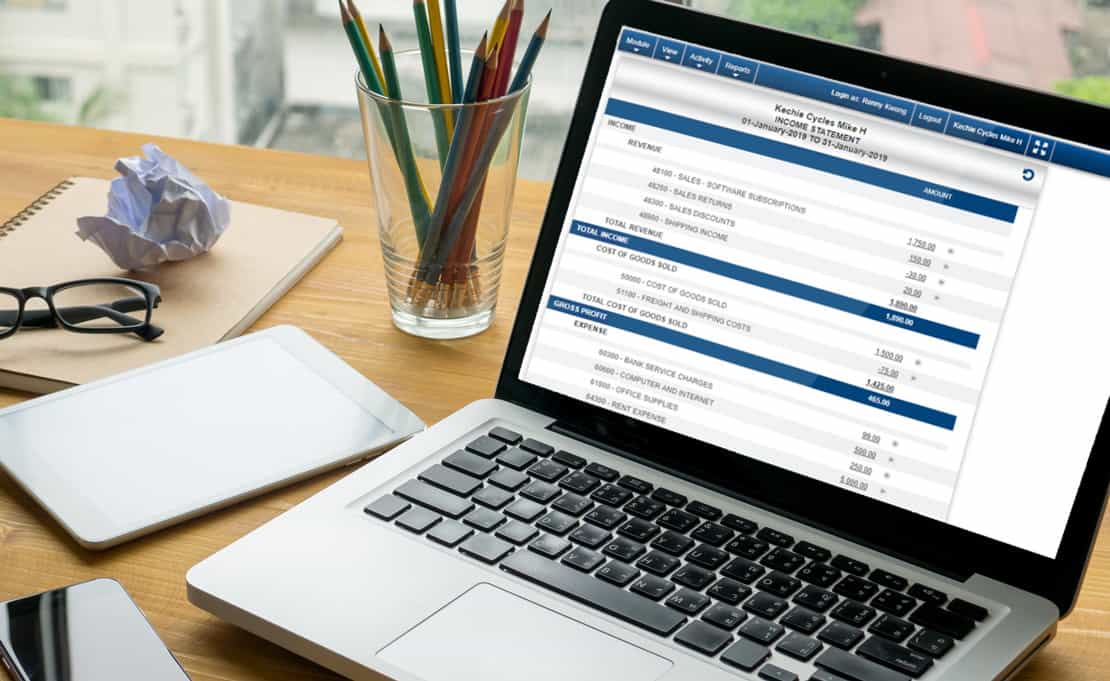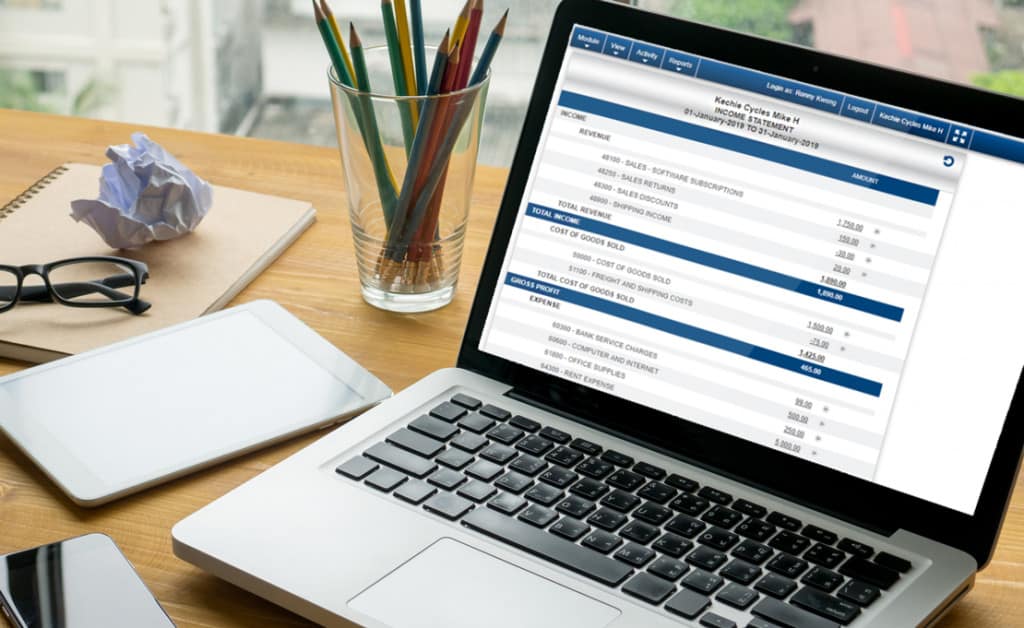How to Upgrade from QuickBooks to a Fully Integrated IMS
How to Upgrade from QuickBooks to a Fully Integrated Inventory Management Software
A step by step guide on upgrading your inventory management solution.
If you’d like to upgrade your business management system to something more capable than Quickbooks, but have hesitated due to the time and effort to make a change, we have news for you. It really is not as difficult as you think. Our Kechie ERP software is designed for small and medium sized businesses in your situation and has built-in features that make this transition easy.
We made it simple by dividing up the process into the following phases:
- Migrate your data from the old system to Kechie
- Train your staff on how to operate Kechie
- Run the systems in parallel for a short period of time to make sure there are no problems
- Once you have gone live with Kechie and everything is running smoothly, you can explore the additional functionality that Kechie can provide to increase the automation and efficiency in your operations.
Transferring All of Your Data
To start with the first phase, most businesses have a few different data-bases that help them manage their business. They usually revolve around:
- Customer Master Data
- Product Master Data
- Inventory Master Data
- Accounts Payable Data
- Accounts Receivable Data
- Current Balance Sheet
- Historical Completed Customer Orders
- Customer Orders, yet to be Completed
- Historical Vendor Purchase Orders
- Vendor Purchase Orders that have yet to be Completed
- And perhaps a few others
Transferring this data manually, could be very time consuming, but Kechie has a great Data Import feature that will automate most of the work. As long as your old system can export the data into either a CSV or XLS spreadsheet format, the team at Kechie has functionality that can import these files into the Kechie system during implementation. These software routines will save considerable time. While doing this, some customers may use this as an opportunity to clean up their data and eliminate obsolete products or customer information, but it’s important to get this done before the import for your sake!
Using Your New Software
When using a new software system, people are always worried about training and getting used to the new system. Kechie has been carefully designed to provide an intuitive menu system that can be learned very easily. In addition, once someone has been trained to use one Kechie module, they will find that the menu arrangements for other Kechie modules are quite similar and learning how to use these is even quicker. When lost or stuck there are help videos within each of the major modules, as well as, a help desk to submit any questions or problems you might have.
When converting to a new system, it is always wise to run the two systems in parallel for a short period of time. It is always worth the extra effort to make sure that something major hasn’t been missed in the transition, because the cost of fixing a problem later can be much higher.
The Initial Transition
For the initial transition, most of our customers will just concentrate on starting to run Kechie with the same functionality that they experienced with their previous system. This is a good strategy, because it allows your team to focus on the initial transition and doesn’t introduce too many changes. However, we emphasize that is just a way to get started. The real value of Kechie is that it will enable you to scale, by providing you more modules and functionalities as you have need of it. You can activate some of the additional features available in Kechie and improve both the efficiency of your operations, as well as, your visibility into how well things are going.
For example, your old system did not support functionality related to manufacturing or purchasing. Once you are comfortable the other Kechie modules are running smoothly, you can then start automating these additional functions to achieve even further streamlined benefits of the system. Since the software has been designed to be highly integrated, once you do activate these additional modules, relevant data from them will start appearing automatically in the modules you were previously using.
A great example might be; when a manufacturing job is completed, the inventory module is automatically updated to show the additional inventory. Your team won’t have to manually enter in this data from an Excel spreadsheet or other ad hoc method you were previously using.
Let's Get Started
The team at My Office Apps will work with you every step of the way. Because our team has great experience working in a multitude of different manufacturing and service companies, we have been in your shoes. Our philosophy is not just that we are providing software, but we are helping our clients improve their business through automation and enabling more efficient procedures. We can advise you on how best to make this transition and offer suggestions on how you can improve your internal operations to get the maximum advantage of our software features. With Kechie, our customers can typically make the transition in weeks and not months, so they can look forward to enjoying the benefits of a more modern, easy, integrated ERP system. To learn more about Kechie and how you can upgrade, contact us. We’d love to show you how we can help you gain visibility and efficiency to grow your business.
Why You Need to Upgrade From QuickBooks, and What to do Next
Why You Need to Upgrade From QuickBooks, and What to do Next
Do you feel that your business is outgrowing basic accounting software like QuickBooks? Well, it may be a sign that you’re doing something right – your business is growing. While QuickBooks is undoubtedly the first choice for business startups and warehouse management due to its affordability and simplicity, it has its limitations. This popular accounting software was not built for heavy lifting. When your business expands and you start racking up clients, the software quickly changes from an asset to a reporting hindrance. If your warehouse faces this challenge, it may be time to upgrade to an enterprise resource planning (ERP) software.
Why are you Outgrowing QuickBooks?
In reality, QuickBooks might not have the scalability and functionality to handle more transactions (past a certain threshold) efficiently and complex processes. As your warehouse expands into multiple locations with higher traffic of goods, you’ll have to upgrade to a software that can handle your business needs.
Below are some of the telltale signs that you’ve outgrown QuickBooks:
-
-
-
1. Slow Processes:
- Are users waiting too long to reconcile/balance books, bill clients, and generate financial statements?
- Or are your employees forced to purge data and use manual data entries in Excel? As data sets expand and the supply chain becomes complex, your old warehouse management system will hinder your growth potential.
- If your processes are slowing down, the system might be overpowered by too much data.
-
2. Inventory Management Challenges:
- If you need to view shipped orders, have a large number of transactions, and need to track inventory in multiple warehouses, including bin and shelve locations, it won’t cut it.
- If you’re selling online, you may need eCommerce integrations and a CRM. Without these, some companies can’t even run.
-
3. Serialization & Lot Tracking:
- If you have multiple SKUs, you won’t be able to see where your products are when it’s time to pick, pack, and ship them. It’s important to utilize serialization or lot number to track the products’ movement, giving you insights to know if they were returned or replaced in the right places.
- Are you being asked to upgrade due to the lack of these features? This is an obvious sign you need to transition to a fully integrated software.
-
4. Perishables with expiration dates:
- If you have expiration dates, you need to be able to track your perishables when storing and tracking inventory. This is a huge problem for someone turning over a lot of inventory that may have an expiration date and can make or break your business.
-
5. Anywhere Access and Software Maintenance:
- Are you stuck working from a single, on-premise location? This means not being able to take it with you wherever you go.
- Do you need to have an IT infrastructure and staff to help streamline inventory and other business processes?
- If you’re having to purchase updates or staying with outdated software that doesn’t measure up to your current needs, you may need to upgrade.
-
6. Business Transparency:
- Is there a lack of in-depth reports outside the field of accounting? If you don’t have an in-depth analysis of inventory levels/ locations that a company needs to streamline a business, you won’t get an accurate measurement of your inventory.
- You need to be able to identify stock movement patterns, use previous sales history to predict future inventory reorders, of course, gain insights into customer and sales trends.
- If business leaders are having trouble accessing vital business data such as average sales margin, cash forecast, and cash position, it’s time to upgrade – unless you want to risk hurting sales and alienating customers with inadequate service provision.
-
7. Software Security Features:
- Are you constantly modifying or deleting existing transactions (invoice journal entry etc.) that don’t follow the best-practice protocol in your financial statements?
- Do your software users have too many permissions you can’t control? Can they see and change content they shouldn’t have access to? This is a huge security risk and may lead to errors or malintent that can cause major issues with your data being manipulated if you’re not paying attention. It’s important to have a solution that can control user permissions and access control to limit the capabilities of individuals and require approval before making changes.
-
QuickBooks Doesn’t Fit, Now What?If you have experienced some of the accounting challenges above, you should seriously consider leveraging a complete ERP solution. An optimal system should solve & answer the following questions:
-
-
- Does the solution offer scalability?
- Does it address the existing inefficiencies of QuickBooks?
- Does the solution have automatic updates and access from anywhere?
- Does it offer online training, easy-to-use software, and remove the need for extensive IT staff?
-
To give you an idea of the kind of ERP you should focus on, consider Kechie ERP. Kechie is a fully-integrated ERP solution that includes; bin location, multi-warehouse management, built-in CRM, inventory management, cycle count, eCommerce integration, RMA, lot, and serial tracking; many features growing companies need that are limited by your current solution. The cloud-based software uses an intelligent inventory tracking system to coordinate shipping from multiple warehouses with minimal inventory conflicts, and it’s accessible from anywhere! Best of all, Kechie ERP’s software adapts and grows with your business with easy implementation and customizable solutions - down to the user level, making the transition an easy one.
Schedule a Demo today and experience the Kechie difference!
-
Signs That You Have Outgrown QuickBooks
Signs That You Have Outgrown QuickBooks
QuickBooks is a popular introductory accounting system for new and small businesses. Its ease-of-use, affordability, and basic functionality, allow you to start using it without an in-depth knowledge of standard accounting procedures. As a business begins to grow, significant imitations become apparent and at some point the business management has to start thinking about converting to a more capable system.
Extensive Supplemental Spreadsheet Use is a Sign That You Have Outgrown QuickBooks...
One sign this is happening to your business, is when your team starts requiring the use of many external spreadsheets to supplement the capabilities provided by QuickBooks.
A goal of any well running business is to automate and become as efficient as possible. One way of achieving this is to utilize well-integrated software tools that can minimize the amount of manual labor needed to track and report on your business operations. Any process that requires the use of external spreadsheets should be immediately reviewed to see if it can be improved.
Some of the issues that can arise using QuickBooks, or accounting tools/ manual spreadsheets include:
- Many pieces of data will require duplicate entries reducing employee productivity
- Errors can arise when data needs to be manually entered rather than automatically
- Data backups, audit trails, and data security are often quite weak when using spreadsheets
- Sharing data between employees may require sending emails, uploading and downloading from a shared server, or even manually passing it on physically with a USB thumb drive
- If different employees are using the same spreadsheet there may not be suitable enforcement to ensure that they are entering the data in a consistent manner
The reason that some companies may end up requiring many supplemental spreadsheets when using QuickBooks is because it was originally developed just as a basic accounting system. For many companies, the ability to track inventory, and manage production is a vital requirement. The QuickBooks support for this is insufficient. Certain required functions such as; lot tracking, bar-coding interfacing, running MRPs, and support for multiple warehouses may require supplemental solutions, which isn't how a business should be run. In addition, the reporting functionality in QuickBooks is focused only on providing accounting reports. They're the type of reports a user might need for managing inventory, or tracking production,which is something they don't provide for.
Other issues that a growing business may experience with QuickBooks, include; certain file size and data limitations, lack of suitable integration and automation capabilities with other software packages, lack of personalized support, and the inability to implement customization so that the software can work better for a particular business. A successful management approach is to adopt the philosophy of continuous improvement. So things that may have worked okay when a company first started may no longer be the best approach as a company grows. One exercise recommended is to review your operations, and count the number of external spreadsheets that are used by your staff to help run the business. You may be surprised at the result! And if you are, call us at My Office Apps to see a demo of how our Kechie ERP software can provide a more capable, integrated solution that will allow you to eliminate the manual spreadsheets, improve efficiency and gain better visibility into your overall operations.







